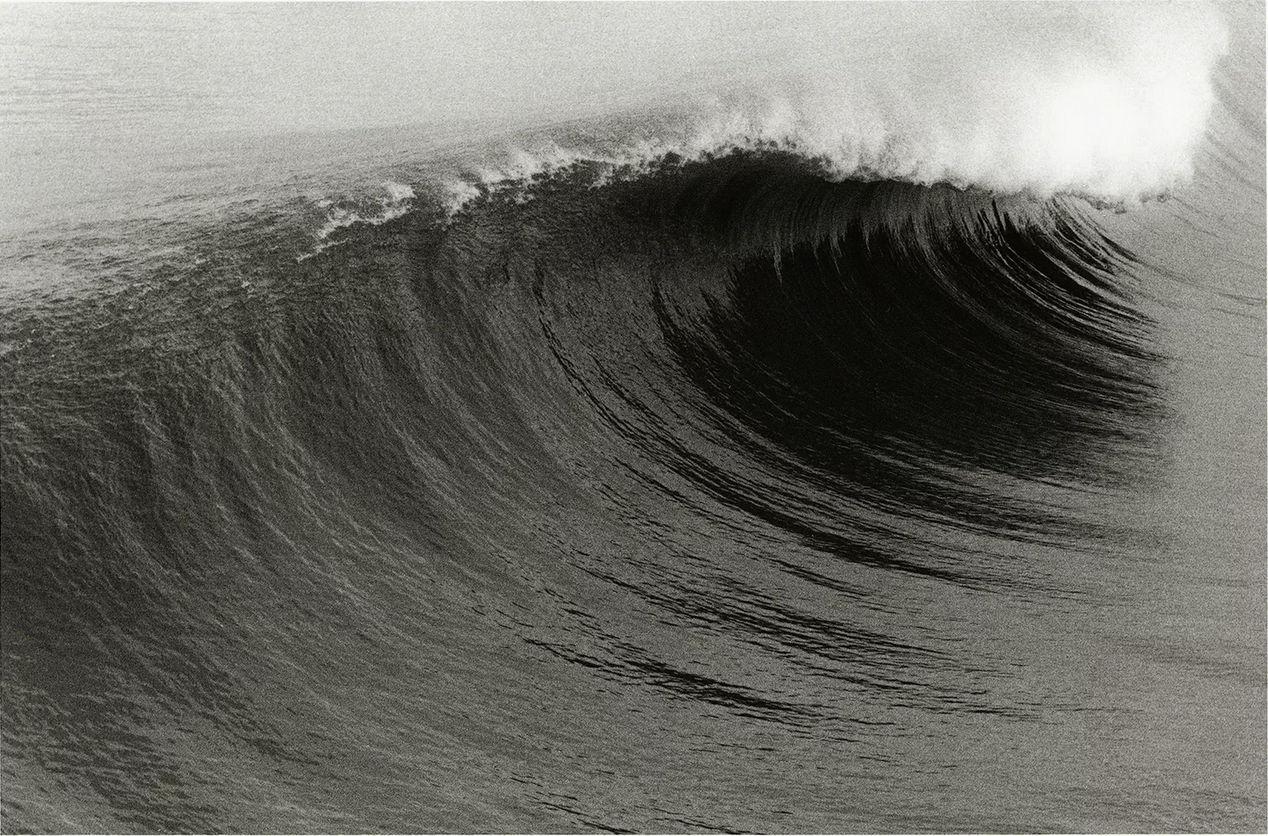
Anthony Friedkin, Breaking Wave - Venice Beach, California, 1978
IMAGE SOURCE: Getty
California Light and Space
ORGANIC REVOLUTION:
Foods that Fueled the LA Art Scene in the 1970s
The 20th century saw the young industrial age spread technological advances throughout the globe, perhaps nowhere as prolifically as across the United States of America. Companies exploded onto the marketplace offering products aimed at making life’s chores a little easier, reducing the time it took to cook and clean. Food distribution was still largely farm to table until mid-century, when supermarket chains began to replace the farm stands and grocers in each local community. Pesticides were developed to increase agricultural yield as industrialized farming proliferated. All of this was embraced nationally as “progress”.
Southern California has long been a health-oriented community, many of its residents having moved here for the mild climate that alleviated their ills and provided year-round outdoor activities. By mid-20th century Los Angeles was a mecca of job opportunities and affordable housing that attracted millions to seek the California lifestyle. It was also home to the film industry, another magnet for fitness and beauty. Many artists who found themselves here were deeply moved by the extraordinary qualities of “light and space” they then strived to capture in their works, leading to an art movement only now coming to be internationally recognized.
Some of the first health food restaurants and fitness gurus were established in Los Angeles long before it became a national trend. But these were the exception to LA eateries in the 1950s, which mostly consisted of high-end restaurants serving French style dishes, immigrant-run ethnic establishments (Mexican, Italian, Chinese). The coffee shops and fast-food drive-thru’s that originated in Los Angeles were in service to the booming car culture. Meanwhile, moms were in the kitchen making casseroles, Jell-O salads and cakes from boxes and cans just like everywhere else in the country, enjoying the new conveniences of a modern world that looked ahead to the “great big, beautiful tomorrow” glimpsed at Disneyland’s Monsanto House of the Future.
But the 1960s – ‘70s marked a time of change throughout the American cultural landscape. Post-WWII “baby boomers” were coming of age, growing into an organized mindset that fought against war and social injustice and advocated for peace, love, human rights and a return to nature. Part of this desire to return to nature was a rejection of the booming economy’s ever-expanding food industry based on pesticide-laden agriculture and mass distribution of processed foods. It was time to start reading labels and reject anything with unpronounceable ingredients.
Nowhere was this rejection more evident than in California, where the mild climate and fertile soil provided the ideal environment for a counter-cultural food movement based on ingredients that were local, fresh, seasonal and organic. Tied to the “hippie” culture, organic gardens, natural foods markets and restaurants as well as recycling centers opened up across the landscape giving evidence to the trend towards sustainable food nourishing body, soul and community. Eastern religions and philosophies took root, bringing with them the practice of yoga, meditation, and sensitivity to all things living. The new “you are what you eat” mentality brought awareness to every bite one ate and helped usher in an age of vegetarianism that is still going strong nationwide. But its American origins were truly in California, popularized by Frances Moore Lappé’s 1971 Diet for a Small Planet, out of Berkeley, arguing the superiority of a plant-based over meat-based diet in terms of nutrition and environmental impact.
Some of the LA food establishments born in this era were the Good Earth Restaurant in Westwood, Topanga Canyon’s Inn of the Seventh Ray, and The Aware Inn on the Sunset Strip. These were “happening” places where artists, students and hippies would gather to discuss the subjects of the day and feel good about eating in a mindful, healthy way. In addition to these more formal restaurants, smaller organic cafés and juice bars began to dot the coast, clustered around popular surf spots and college communities where the healthy mindset was exploding.
Typical of these smaller establishments was Sun and Earth Natural Foods in Isla Vista, the student community just north of Santa Barbara, California. Founded by Richard Moore in 1968, this market/café provided organic produce and unprocessed, wholesome foods to shoppers, while diners enjoyed freshly prepared vegetarian meals under a geodesic dome structure in a beautiful garden setting out back. Organic produce was supplied by Sunburst Farms, a yoga community from the nearby foothills, in support of the fresh/local/seasonal/organic philosophy of healthy eating. This was the “go-to” hip eatery for locals but also famous enough to draw destination diners from the LA area, and worthy of a pit stop for those heading north or south on Highway 1.
This California “Light and Space” culinary exploration offers a series of dishes that were popular in the 1970s, many reminiscent of the culinary experiences of LA artists whose work can be seen in museums around the world. All recipes are from the Author’s repertoire of offerings while she was the head chef at Sun and Earth Natural Foods in Isla Vista from 1972-1974.
Untitled (First White Light Series), 1968. Mary Corse. Museum of Modern Art, NYC. IMAGE SOURCE: MOMA
Mary Corse’s work gives the viewer a physical role in perceiving the movement of light and shadow across the object, igniting its potential for personal reflection. Like many of her contemporaries, her work is best experienced in person, where she encourages the viewer to become "part of the painting" by altering its radiance with movement.
